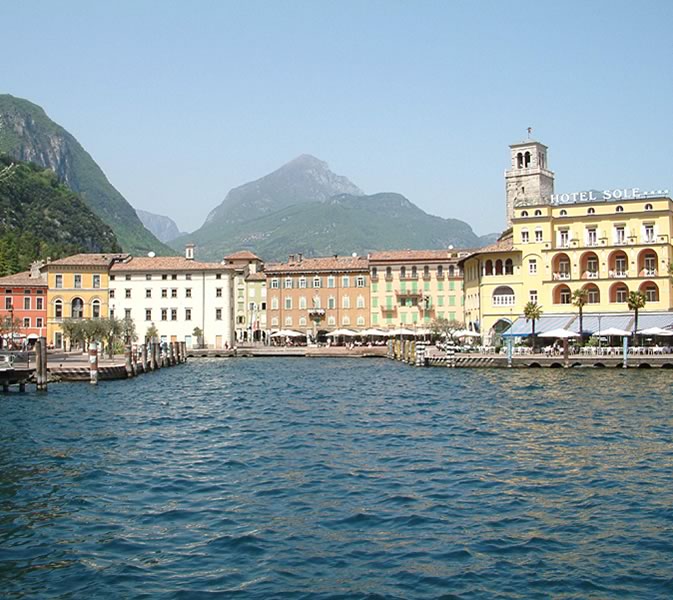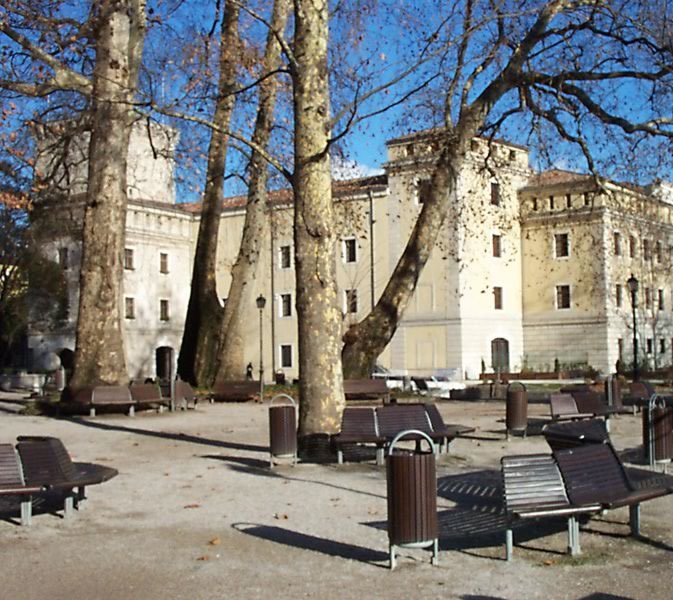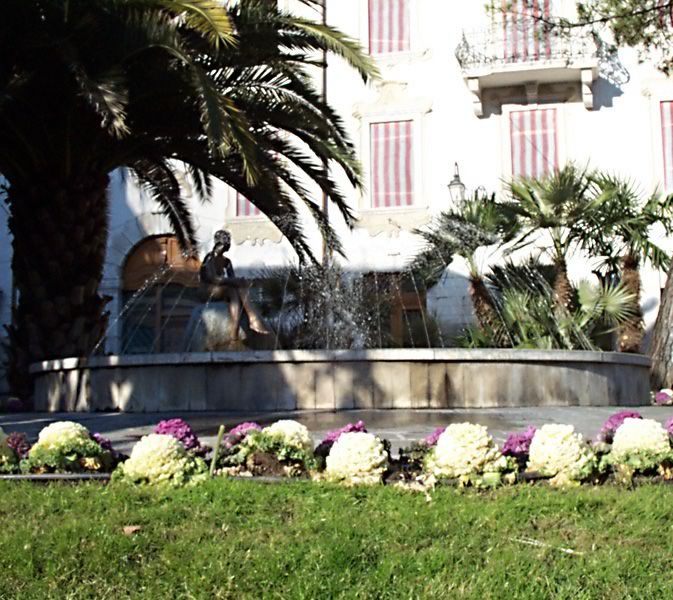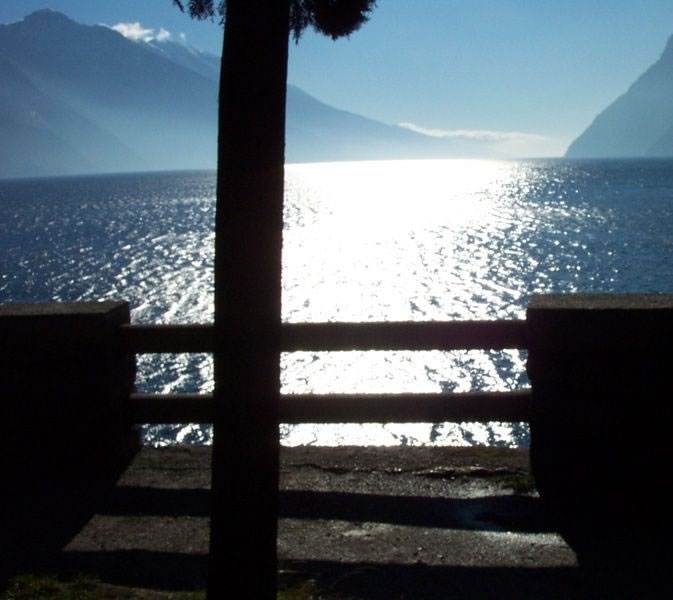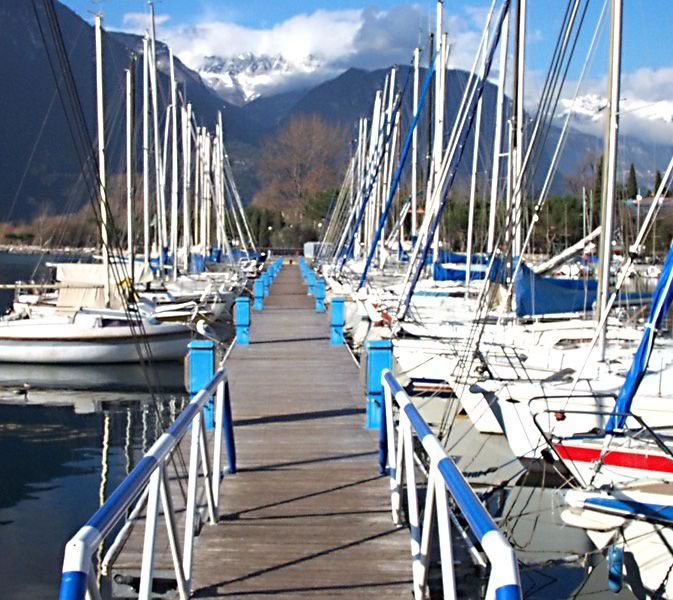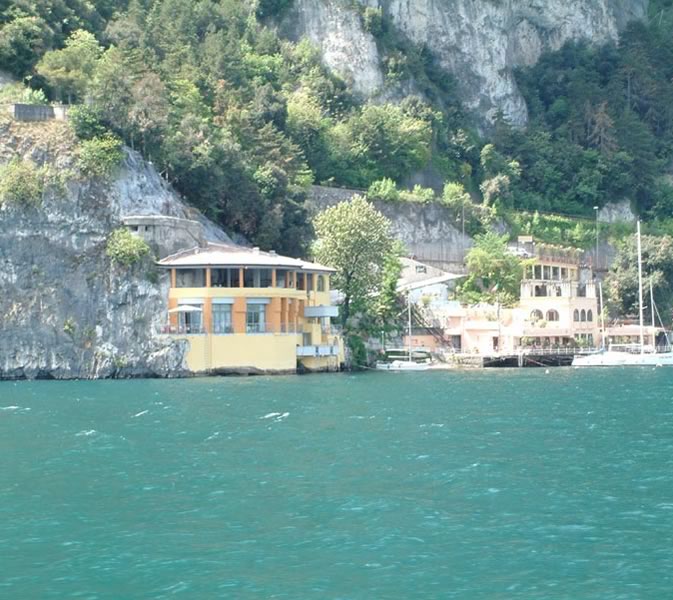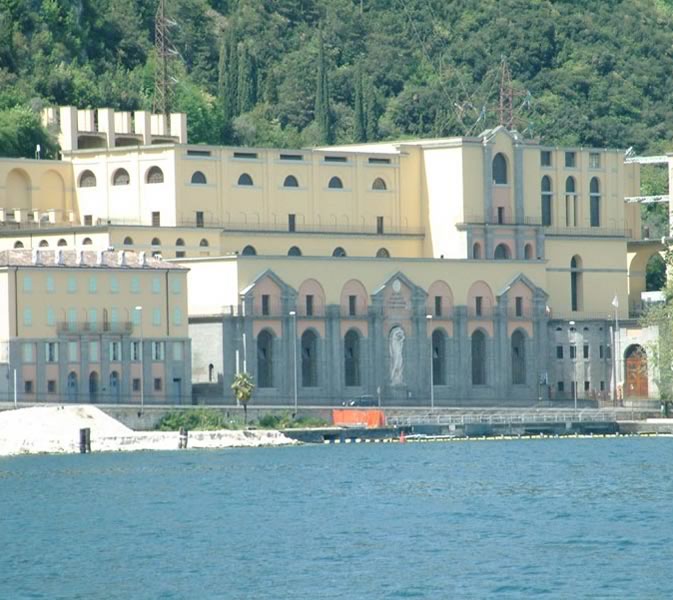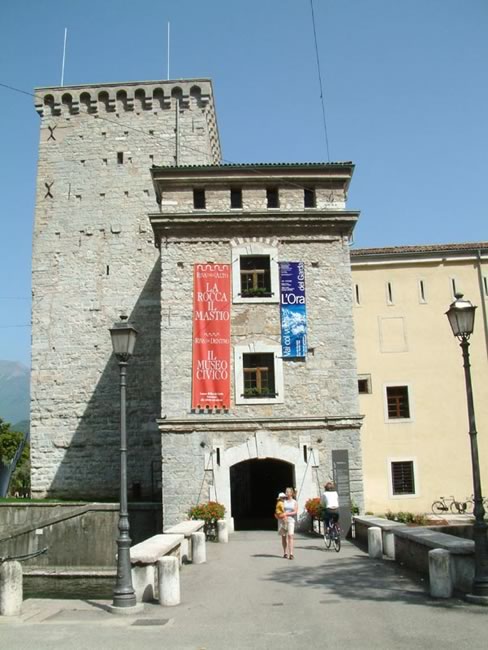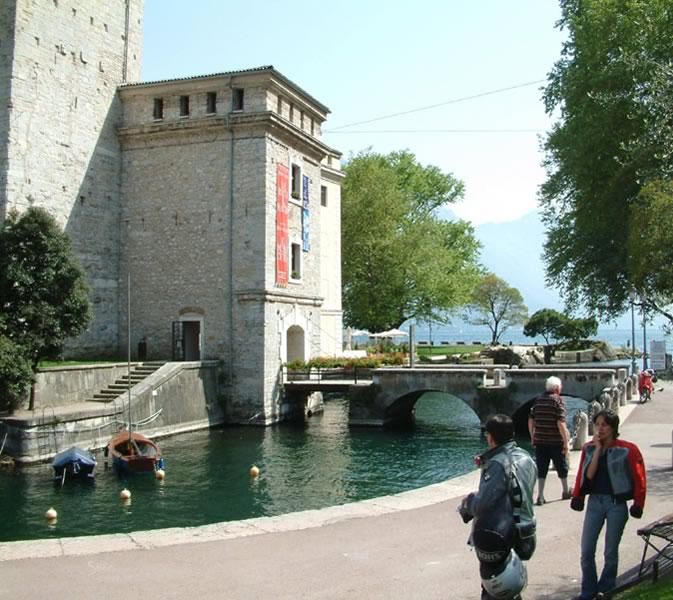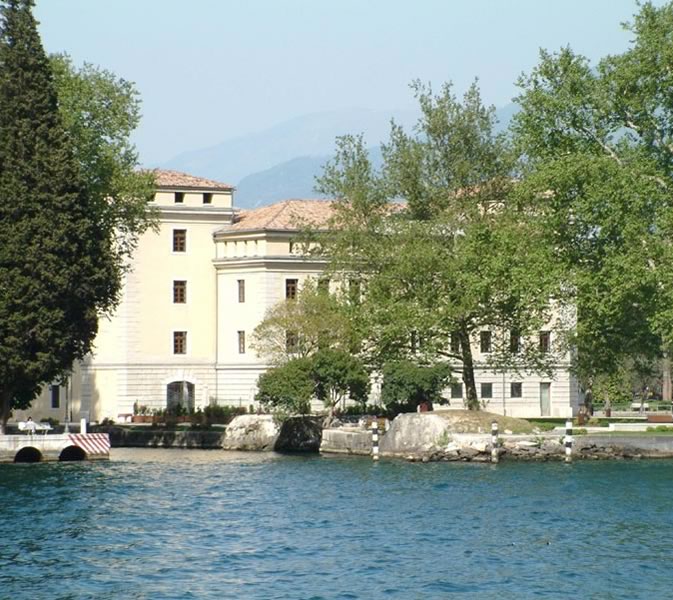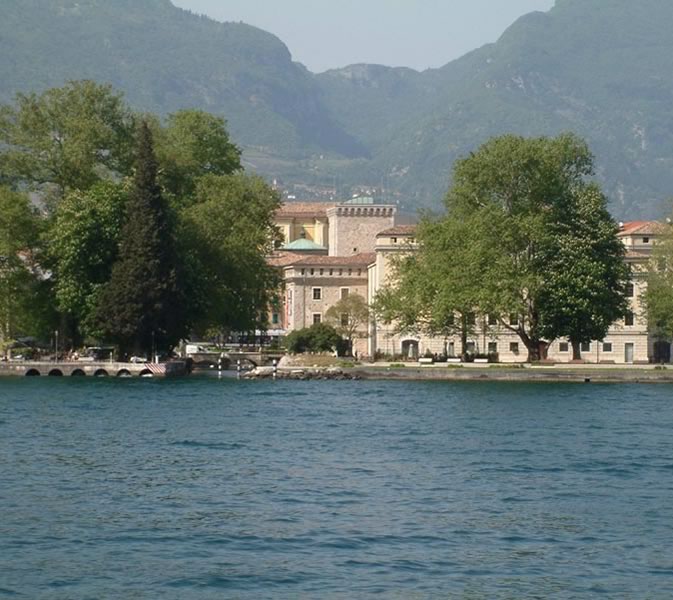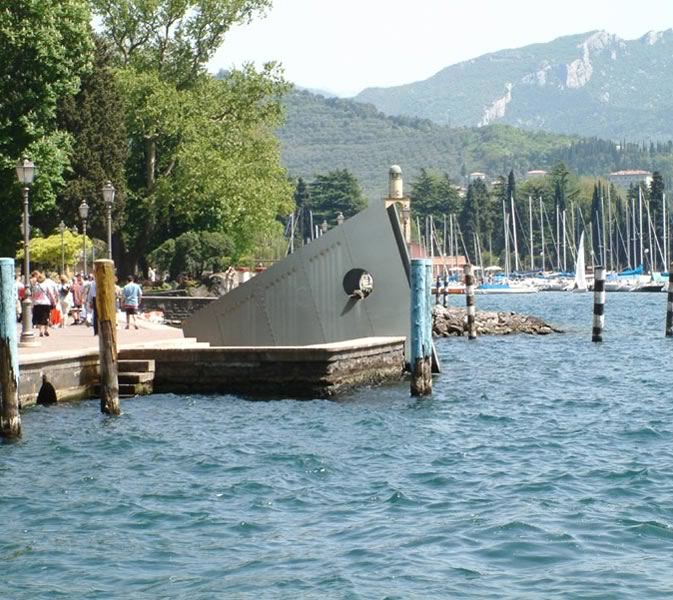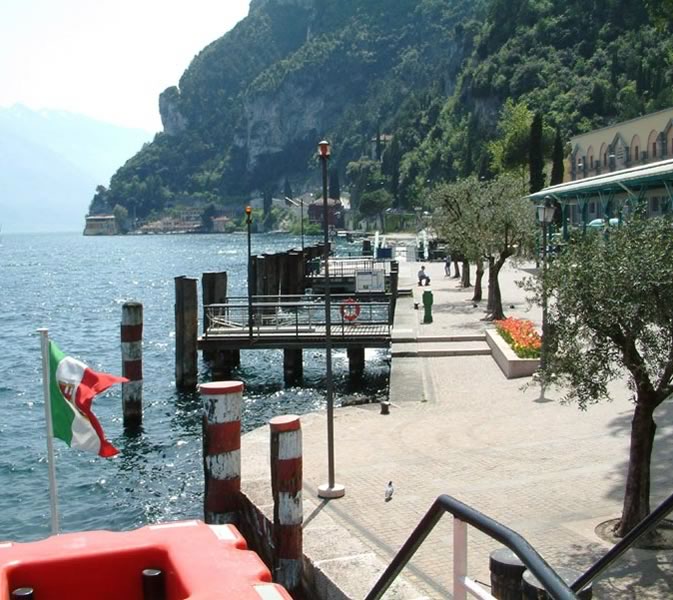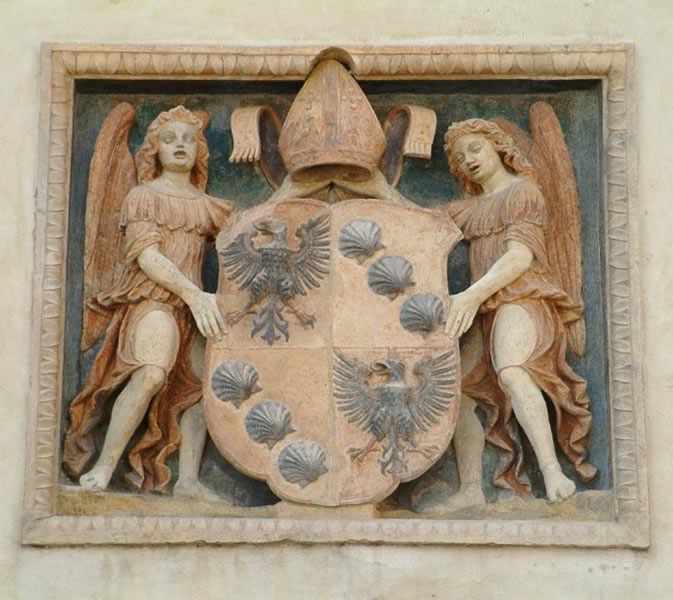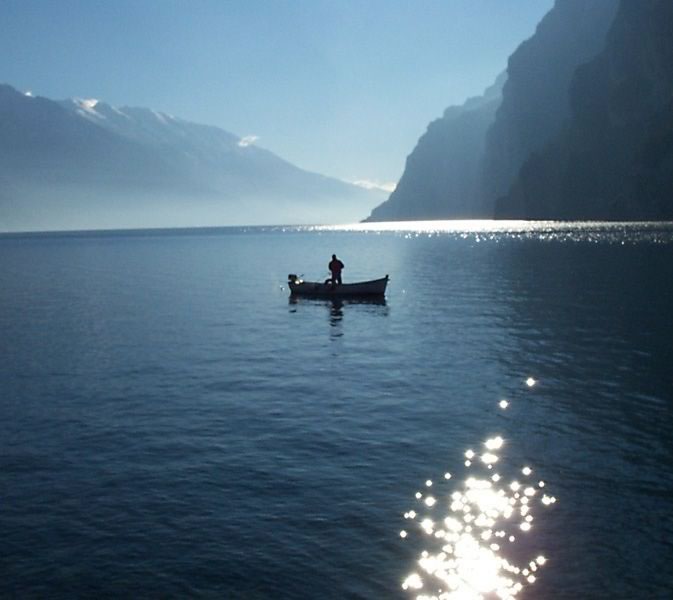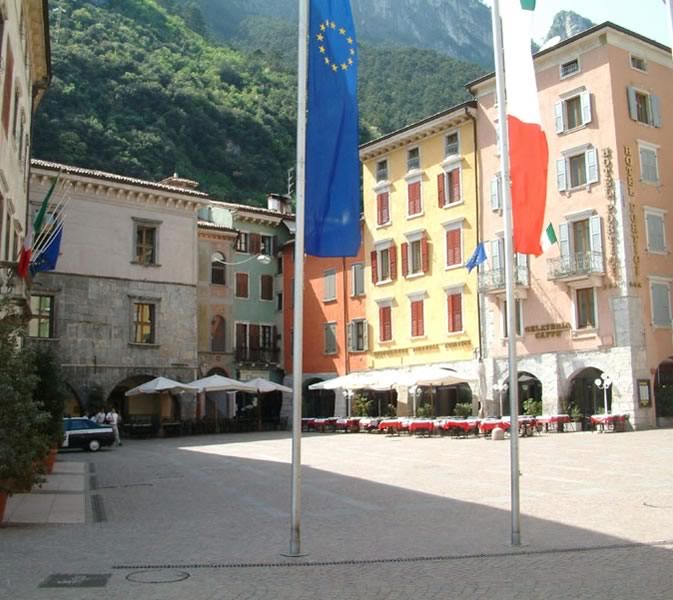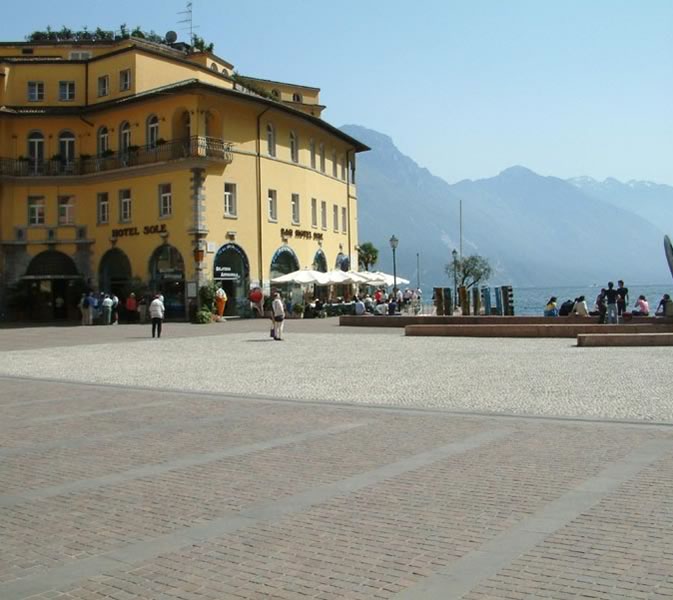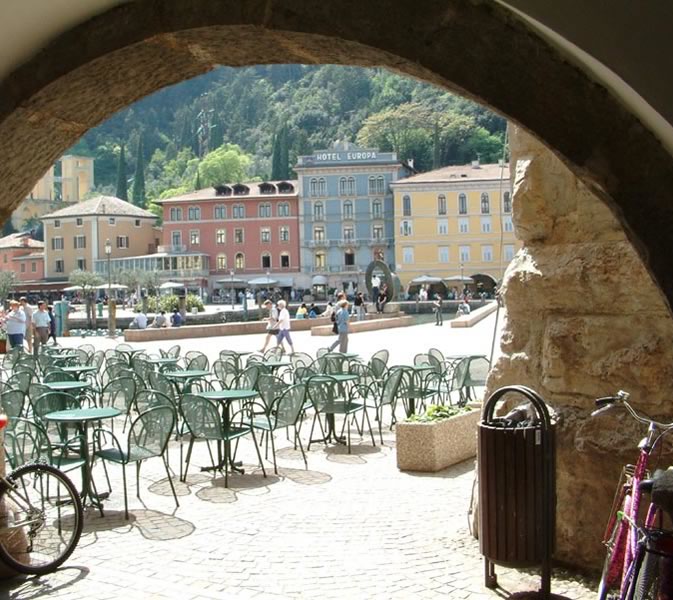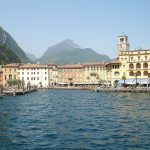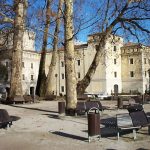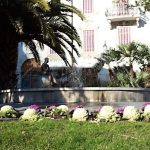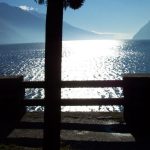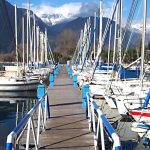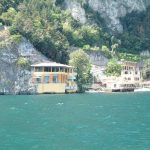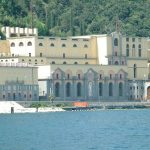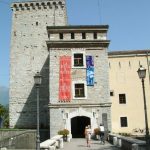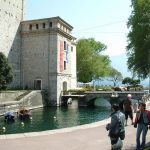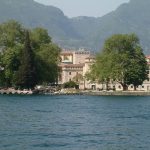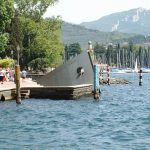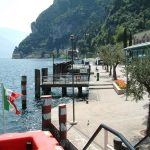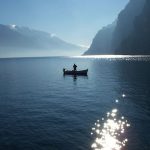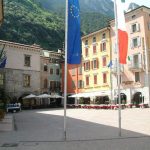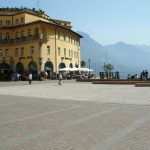Riva del Garda
HISTORY OF RIVA DEL GARDA
The town was certainly inhabited during the Prehistoric Epoch, but a real recovery rose thanks to the Romans. Once a time, Riva del Garda and Brescia even belonged to a Celtic tribe, called “Tribut Fabia”. In those days the town was called Ripa, which derives from “stirpa celticha” = Celtic tribe. In 983 the sovereign Ottone II committed the town Riva del Garda to the care of the bishops of Verona. Then it came under the rule of the bishop of Trento and in 1349 it was captured by Mastino II della Scala, as a guarantee for a loan of 4.000 Gulden. Later the landscape belonged to the Visconti Family, then to the Counts of Tirolo and from 1440 to 1509 it took part of the Republic of Venezia. They enlarged and strengthened the fortress Riva del Garda and built a palace, today town hall, and a high wall (1508) on the foot of the mountains. At the beginnings of the 15th. century Riva del Garda fell under the rule of the bishop of Trento again, in 1703 French military troops of the Duke of Vendome occupied the zone, occupation troops , leaving terrible keepsakes. Then, after the fraternisation with Napoleon, Riva del Garda was reoccupied by Austria (1813) and finally annexed to the Reign of Italy.
ARTS
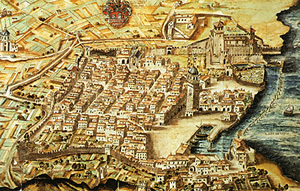 Parking our car nearby the water power plant, built in Liberty stile during the 20s by Giancarlo Maroni, the architect of the Vittoriale we go on walking on the promenade to Piazza Catena. There is a monument of San Giovanni Nepomuceno, a German saint and named in the same time saint patron of Riva del Garda in 1735. In front of Piazza Catena we can see the zone of the ancient port. Riva del Garda always was an important town: thanks to its good geographic position it was considered as centre of trading and merchandising between Pianura Padana and the background of the Prealpi. On “Piazza III Novembre”, a square, there were situated a lot of shops, magazines and department stores, just in front of the port. This “Piazza” is dominated by Apponale Tower, the symbol of Riva del Garda, built in the 12th. century and heightened in 1555. On the spire there is to see a metal angel, called “Anzolìm de la tòr”. In front of the tower stands the city hall, an ancient palace, edified in 1482 in Venezia stile, today united with Palazzo Pretorio, built by the Skaligery in 1370. Here you can find Romanesque and Medieval tombstones with Latin, Hebrew and customary inscriptions. “Gran Hotel Imperial et Pension du Soleil”, situated in the zone of the port, is the 1st hotel of Riva, years ago it was residence of kings, princes and noblemen. At the end of the square begins the charming historical centre, preserving some romantic corners, which even today are transmitting the unforgettable magic of the Middle Ages. Walking on the promenade, we reach the castle, surrounded by a waterway. The original building dates back to the 11th. century, during the Austrian supremacy it was used like military caserns. Then, in the 16th. century, the fortress became a typical Renaissance-castle, residence of Gaudenzio Madruzzo and his wife Alfonina Gonzaga, well known of giving a lot of festivals. Today the building, completely restored, contains a museum and a “pinacoteca”, which keeps masterpieces by Giuseppe Craffonara (1790 – 1837) an artist of Riva del Garda and well known as the most famous neoclassic artist of the Regione Trento. Taking Via Mazzini, we arrive at “Piazzetta del Mercato”, a little square where rises the parish church, a temple of the 18th. century and consecrated to Our Lady. Inside it keeps paintings by Cignaroli and del Craffonara. Outside there is to see a wonderful Romanesque tub.Turning right and we reach the portal “Porta San Michele” (13th.century), one of the three remains of the ancient city wall. Here stands the antique baroque church “dell’Inviolata” (Our Lady). The building dates back to 1603, it has a square form and an octagon nave, with a wonderful dome, window frescoes, constructed like mosaics. Then you can see precious pieces by Reti, beautiful altar paintings by Teofilo, Polaco and oil paintings by Palma, il Giovane. Directly on the lake, near the gallery, passing through Monte Brione, we can find another port, called “San Nicolò”, protected once a time by an unique castle, built on the ruins of a temple and today seat of the laboratory of Hydrobiology, a branch location of the scientific centre “Villino Campi”, situated at the district Sabbione.
Parking our car nearby the water power plant, built in Liberty stile during the 20s by Giancarlo Maroni, the architect of the Vittoriale we go on walking on the promenade to Piazza Catena. There is a monument of San Giovanni Nepomuceno, a German saint and named in the same time saint patron of Riva del Garda in 1735. In front of Piazza Catena we can see the zone of the ancient port. Riva del Garda always was an important town: thanks to its good geographic position it was considered as centre of trading and merchandising between Pianura Padana and the background of the Prealpi. On “Piazza III Novembre”, a square, there were situated a lot of shops, magazines and department stores, just in front of the port. This “Piazza” is dominated by Apponale Tower, the symbol of Riva del Garda, built in the 12th. century and heightened in 1555. On the spire there is to see a metal angel, called “Anzolìm de la tòr”. In front of the tower stands the city hall, an ancient palace, edified in 1482 in Venezia stile, today united with Palazzo Pretorio, built by the Skaligery in 1370. Here you can find Romanesque and Medieval tombstones with Latin, Hebrew and customary inscriptions. “Gran Hotel Imperial et Pension du Soleil”, situated in the zone of the port, is the 1st hotel of Riva, years ago it was residence of kings, princes and noblemen. At the end of the square begins the charming historical centre, preserving some romantic corners, which even today are transmitting the unforgettable magic of the Middle Ages. Walking on the promenade, we reach the castle, surrounded by a waterway. The original building dates back to the 11th. century, during the Austrian supremacy it was used like military caserns. Then, in the 16th. century, the fortress became a typical Renaissance-castle, residence of Gaudenzio Madruzzo and his wife Alfonina Gonzaga, well known of giving a lot of festivals. Today the building, completely restored, contains a museum and a “pinacoteca”, which keeps masterpieces by Giuseppe Craffonara (1790 – 1837) an artist of Riva del Garda and well known as the most famous neoclassic artist of the Regione Trento. Taking Via Mazzini, we arrive at “Piazzetta del Mercato”, a little square where rises the parish church, a temple of the 18th. century and consecrated to Our Lady. Inside it keeps paintings by Cignaroli and del Craffonara. Outside there is to see a wonderful Romanesque tub.Turning right and we reach the portal “Porta San Michele” (13th.century), one of the three remains of the ancient city wall. Here stands the antique baroque church “dell’Inviolata” (Our Lady). The building dates back to 1603, it has a square form and an octagon nave, with a wonderful dome, window frescoes, constructed like mosaics. Then you can see precious pieces by Reti, beautiful altar paintings by Teofilo, Polaco and oil paintings by Palma, il Giovane. Directly on the lake, near the gallery, passing through Monte Brione, we can find another port, called “San Nicolò”, protected once a time by an unique castle, built on the ruins of a temple and today seat of the laboratory of Hydrobiology, a branch location of the scientific centre “Villino Campi”, situated at the district Sabbione.
From the church San Nicolò you can climb up to Monte Brione (altitude 376m), rising from the riverbed of Sarca, presenting unforgettable panoramas of the valley Arco – Riva and especially of Lake Garda. On the slopes lies the little hamlet Sant’Alessandro with its wonderful Villa de Lutti, one of the most marked palaces of Lake Garda (18th. century), designed by the famous architect Caregaro Negrin. In the living hall, earlier, was the seat of an active citizen club, with famous members, for example: Andrea Maffei, Emilio Visconti Venosta and the poem Giovanni Prati. Riva del Garda had to announce many other illustrate guests, let us remember Thomas and Heinrich Mann, Kafka, Nietzsche, Sigmund Freud and Rudolf Steiner.
ATTRACTIONS
Leaving the little church “Inviolata”, taking the road to Tenno, and just in a few minutes we reach the river Varone with its rocky riverbed. At hamlet Tenno (altitude 428m.) here you can find a little lake with the same name rises on a steep rock a castle, once one of the most important defence-points of the bishop and prince of Trento. Under the castle lies the castle village “Frapporta” with high outside walls, where the church San Lorenzo is integrated. Inside it keeps precious examples of Trentino arts (11th. century). The village Ville del Monte includes the little Medieval hamlets Calvòla, Canale and Pastoedo. In Canale you can visit an agricultural museum and during summertime they organize many popular festivals, for example “Rustico medioevo” (the rustic Middle Ages with concerts, performances and exhibition of traditional cooking). In Calvòla is to visit a house of arts, called “Casa degli artisti Giacomo Vittone” where you can make courses of painting and pottery.
Following the river Sarca, after a few time, we arrive at Dro, framed by a wonderful landscape with the famous mountains “Marrocche”, a memory of the Glacials, 187 million years B.C. Here grows a special plum-tree, called “Prugna di Dro”, its fruit should be the best plum-fruit of Europe. Leaving Dro, after a short distance lies Drena (altitude 398m.), just inhabited during the Prehistory and then occupied by Roman troops. The castle, property of the Dukes of Arco, has become today congress-hall and theatre. The little hamlet is famous for its “Marroni di Drena” (special sweets made by chestnuts and sugar) thanks to the plentiful chestnut-trees, surrounding this place. The yearly festival of Riva is called “La Notte di fiabe” (the night of fairy tales). It takes place at the end of August, involving all districts. Famous its wonderful fireworks! Returning to Piazza Catena we can see the gates of the fairy-boats of Navigarda, travelling two times a day from Riva to Desenzano and return. The big naves have restaurant and a wonderful terrace in on the upper-floor, where you can enjoy unforgettable panoramas.
